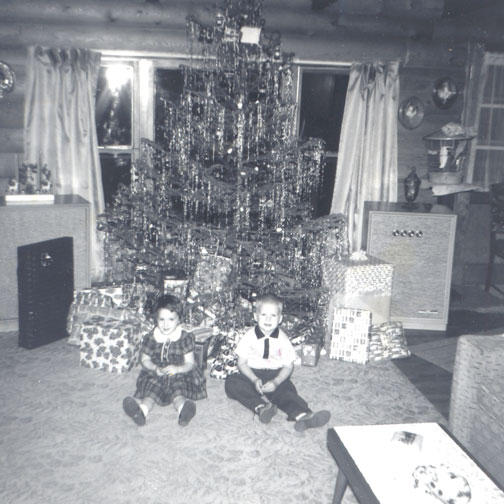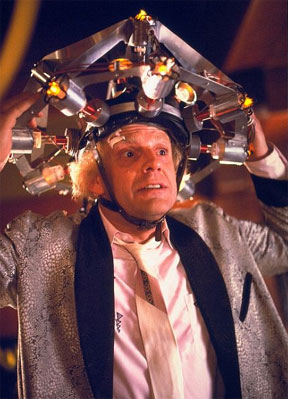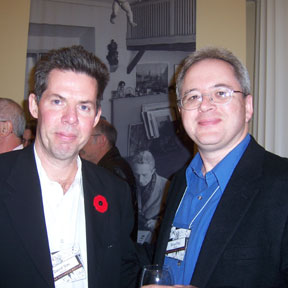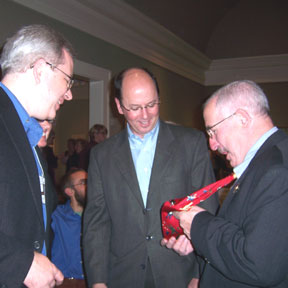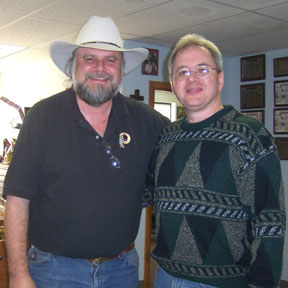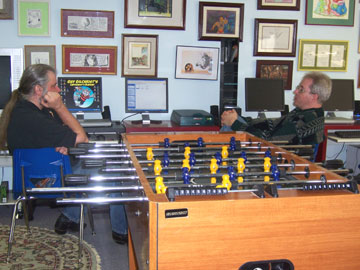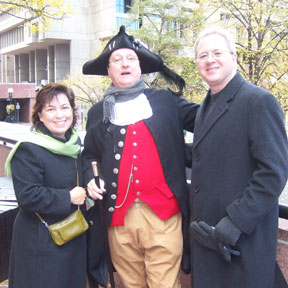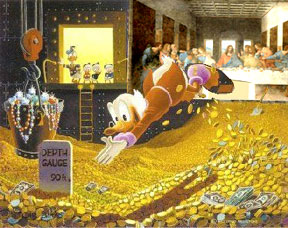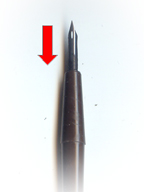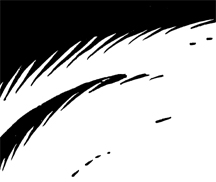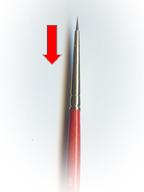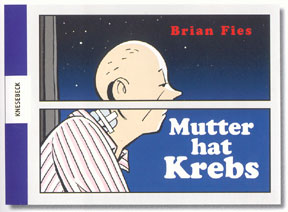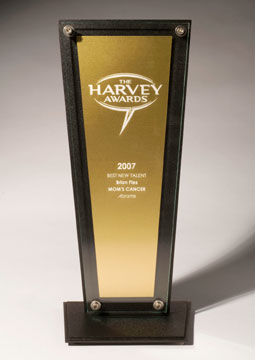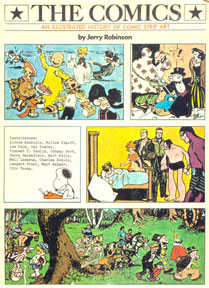I broke a rule. Turns out it's more of a "guideline" than an actual "rule," but I wanted to explain myself anyway.
.
In a few long-ago posts I wrote about my tiny collection of original cartoon art. Knowing that I could easily get carried away and bankrupt my family, I established my rule: I would only acquire art from friends or artists with whom I'd developed a relationship. We don't have to be buddies forever; just a couple of e-mails or a nice 10-minute conversation will do. The point is that when possible I'd get pieces directly from the artists themselves and have an emotional connection to the work that conjured a good story or nice memory. Right now I've got
Irwin Hasen,
Raina Telgemeier, Otis Frampton, Ted Slampyak,
Charles Schulz (acquired
way before I made up the rule but still a nice story) and
Winsor McCay (also pre-rule--but I would have broken it for him anyway).
.
And now I've got Eddie Campbell. Here's the original Page 80 from Mr. Campbell's recent book, The Black Diamond Detective Agency.
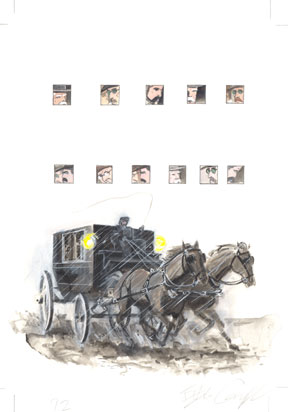
Original p. 80, Black Diamond Detective
Agency, by Eddie Campbell. Captions and word
balloons were added in production.
I broke my rule for Mr. Campbell. Never met him, never corresponded with him. I saw him at ComicCon last July and almost approached his table, but he looked too busy and I never got back to him.
Eddie Campbell is probably best known for drawing
From Hell, a retelling of the Jack the Ripper story written by Alan Moore. He's the creator of a long-running series titled
Bacchus about the Greek gods living in modern times; a few semi-autobiographical works including
The Fate of the Artist, which I thought was terrific; and
The Black Diamond Detective Agency, based on an unproduced screenplay about a deadly train explosion in 1899 Missouri and a Hitchcock-esque man-on-the-run framed for it.
On paper, I'm not a particularly devout fan--haven't seen much
Bacchus and didn't actually care for
From Hell, which I found unengaging and lurid in a Bret Easton Ellis sort of way (I concede that if any subject cries out for carving up some women for fun, it's Jack the Ripper). However, Mr. Campbell's contributions are, I think, always excellent. Both his writing and artwork are interesting, witty, well-researched, and thoughtful. His confident, relaxed impressionistic style is built on a rock-solid foundation of craft. He's comfortable with ink, paint, collage, multi-media, typography: whatever he needs to get the effect he wants, he's not afraid to put it on the paper. He knows which rules to follow and break, and why. Everytime I read his work, I come away inspired to try two or three things I'd never thought of. In addition, I always get an absolute sense of
integrity from his work.
Reading
his blog for a while, I've also gotten a sense for Mr. Campbell as a person and I like the cut of his jib. He seems to be one of a small number of
grown-ups working in the comics/cartooning/picture book/graphic novel business, and now I need to go on a little rant to explain what I mean by that.
Here's the Tirade
Comics are in an interesting, tricky place right now. First, there's the problem that much of the general public thinks comics are for kids. Some creators are striving mightily to have their comics taken seriously as literature, while others deliberately wallow in their low-class outsider status and confirm every slander against the entire medium. Others just don't care. Every few months for the past couple of decades, some reporter does a story with the headline "Pow! Bam! Comics Aren't Just for Kids Anymore!" Some of them have been about me. Every comics convention has at least one panel discussion on the topic of when comics will finally enter the mainstream. I've been on some of them.
As comics have been taken more seriously, they've drawn critics, students, analysts, theorists, and cranks. Much of their discourse happens on the Internet, though it occasionally spills over to print. There are people dedicated to making rules, defining terms, arguing what is or isn't a comic, deciding who's in or out of the club. Is it a comic strip, a comic book, an illustrated book, or a graphic novel? There are people who question whether "Prince Valiant" is a comic because it doesn't use word balloons or whether "Family Circus" is a comic because it doesn't show the passage of time via sequential panels. (Answer: they're comics. If your definition of comics excludes them the problem is yours, not theirs.) Webcomics spice the debate with arguments about what is or isn't a
digital comic.
There are people who confidently declare that there are only eight kinds of this or four ways to do that, and whenever I hear that I immediately think of three other kinds of this and two different ways to do that, and then I realize what a waste of time it is. It all reminds me of a Victorian gentleman's butterfly collection in which the point isn't to appreciate butterflies or advance science, but to pin the right label on every specimen so it ends up in the proper cabinet drawer. That's the sport of it: getting the taxonomy right. And the way some of these guys talk, if they don't have a drawer for your butterfly, it might as well be a lemur.
In response to such as that, Mr. Campbell once assembled a tongue-in-cheek "Graphic Novel Manifesto." All 10 points can be read at the end of Mr. Campbell's
Wikipedia entry; I'll just provide the first and last:
1. "Graphic novel" is a disagreeable term, but we will use it anyway on the understanding that graphic does not mean anything to do with graphics and that novel does not mean anything to do with novels.
10. The graphic novelist reserves the right to deny any or all of the above if it means a quick sale.
Yes! If I could be so bold as to sum up Mr. Campbell's perspective in one sentence, I'd say it's "Just shut up and make the things as best you can!" Don't worry about fitting into someone else's definitions or rules. Don't fret over whether its Number 6 or Number 7 on somebody's list of the only 12 things it could possibly be. It doesn't matter if it's a cartoon or comic or graphic novel. Like the shoe commercial said, Just Do It. If it's good, people will find it. None of them will care what it's called.
This was brought home to me in a small way at the San Diego Comic-Con last July, when I had dinner with Jeff Kinney, author of
Diary of a Wimpy Kid. We were on our way to watch me lose two Eisner Awards and had a short chat about whether Jeff's book would be eligible for Eisner consideration next year. It
looks like a comic--it's got little cartoon drawings with words coming out of characters' mouths--but, on the other hand, most of the book is typeset text (in a font made from Jeff's hand printing), so maybe it's more of an illustrated book or novel with pictures. As we were having this discussion, I realized two things: first, it was a ridiculous conversation that had absolutely no impact on what the book actually was and who would buy and read it; second, this was almost the only context in which that conversation had any merit whatsoever. The only people who should ever care are award administrators who need to decide which trophy to give you and bookstore clerks who need to figure out which shelf to put you on. It's otherwise useless, irrelevant, and probably counter-productive.
Anyway, in the weeks to come, we did figure out what to call Jeff's book: "Bestseller." Now with 26 weeks on the New York Times Bestseller List for Children's Chapter Books, including a stint at Number 1.
I've never liked the term "graphic novel," though I accept its practical utility. When I was making
Mom's Cancer, I thought of it as a serial comic strip. In light of the rant above, then, I've been especially delighted that it's gotten some recognition from the American Library Association, the German Jugendliteraturpreis, and others as a work of youth literature. I didn't know I wrote a kids' book. Never intended it, my publisher never positioned it as such. It not only broke out of the graphic novel drawer others put it in, but the drawer
I put it in. I think that's just wonderful.
Here are some questions I ask when reading
anything--even a graphic novel. Does it reward my time and attention? Does it introduce ideas I've never had before? Is it skillfully made? On its own terms, does it accomplish its goals? Is it worth the $2, $12.95, or $200 I paid for it?
Is it good?
Some people in comics/cartooning are doing excellent, ambitious, high-quality work. But far too often, based on what I see (which is far from the whole industry), a lot of creators demand literary respect but do little to earn it. They want to sit at the adult table but don't know how to use a knife and spoon. They have no idea what makes great literature great or why theirs falls short. They're their own worst enemies.
Not all, but some. Many. Maybe most.
(What's funny is to read someone's high-minded academic defense of their comic as art and literature just as good as anything ever done by Hemingway or Joyce, and then go look at it and find an artless scrawl about a video-gaming slacker with a time machine and wise-cracking dinosaur. You're not part of the solution, dude, you're part of the problem.)
That's what I mean when I say Eddie Campbell is a grown-up. He not only knows how to use a knife and spoon but also a finger bowl and the funny little fish fork (metaphorically; I have no idea what his actual table manners are like). He's cranky. He's sat on too many panels dedicated to dissecting what graphic novels are and when they'll be respected as
real books, and he's tired of it. Instead of endlessly debating, he works. He makes books with words and pictures that reward the reader's time and attention, introduce new ideas, accomplish their goals, and are worth the money people pay for them. Even more than his work, I appreciate and respect his attitude
toward his work. It's worth breaking a rule--or bending a guideline--to have it in my home. It makes me happy.
.
